Julie Harris: The woman who dressed 007, Sherlock, and The Beatles
 Saturday, March 27, 2021 at 11:30AM
Saturday, March 27, 2021 at 11:30AM 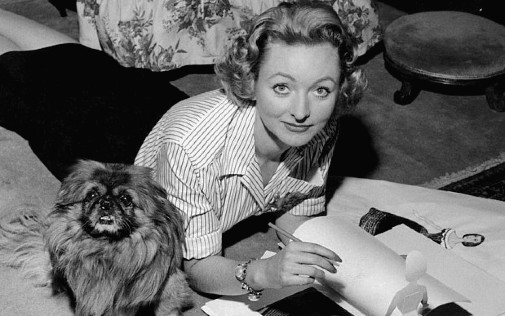
The word 'iconic' gets thrown around a lot these days. So much so that its essence has become diluted, nearly meaningless. Nonetheless, some people do deserve to be called iconic. Costume designer Julie Harris, who was born 100 years ago, is one of them. If not her, then her work deserves the moniker. From the 1940s until 1991, Harris helped define the look of British cinema and pop culture, dressing a myriad of international stars and idols, working for some of the greatest directors ever.
Her impact was particularly felt in the 1960s when - designing films like Darling, the Beatles' A Hard Day's Night and Help! - she defined mod fashion on the silver screen. Furthermore, Harris dressed such iconic characters as James Bond, Sherlock Holmes, Dracula, and the Muppets. Her filmography's the stuff dreams are made of…
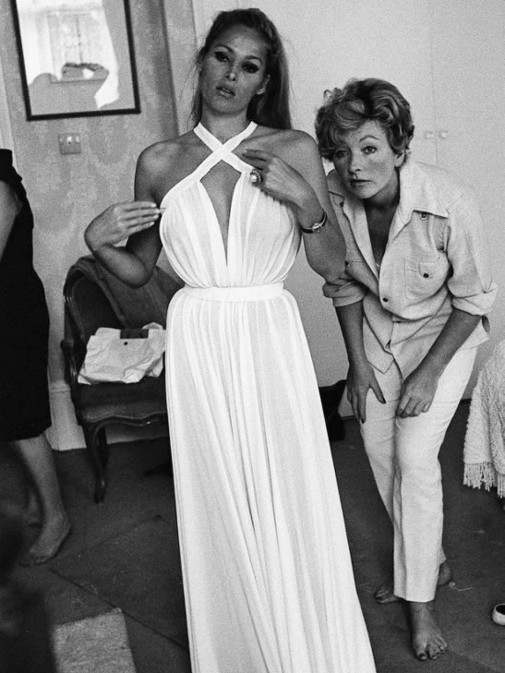 Ursula Andress and Julie Harris during a fitting for CASINO ROYALE (1967)Born in London in 1921, Julie Harris didn't study costume design, preferring the fine arts to the world of performance. However, Harris found herself working for court dressmaker Nesta Neva during the late 30s and early 40s. From then on, her path was forever tied to the making of clothes. By 1947, she got her first solo credit in a movie, Holiday Camp, and the rest, as they say, is history. After some time working at Gainsborough Films, she got a gig at Rank studios before amassing enough of a reputation to go freelance. Twenty years after her first movie, Julie Harris was an institution of British entertainment, even though most people didn't know her name. Such is the fate of all behind-the-scenes artists.
Ursula Andress and Julie Harris during a fitting for CASINO ROYALE (1967)Born in London in 1921, Julie Harris didn't study costume design, preferring the fine arts to the world of performance. However, Harris found herself working for court dressmaker Nesta Neva during the late 30s and early 40s. From then on, her path was forever tied to the making of clothes. By 1947, she got her first solo credit in a movie, Holiday Camp, and the rest, as they say, is history. After some time working at Gainsborough Films, she got a gig at Rank studios before amassing enough of a reputation to go freelance. Twenty years after her first movie, Julie Harris was an institution of British entertainment, even though most people didn't know her name. Such is the fate of all behind-the-scenes artists.
Part of her excellent reputation stemmed from an ability to handle difficult stars, placate divas, and negotiate all parties' interests with great ease. No wonder there are so many big names in her filmography, like Joan Crawford, Bette Davis, Lauren Bacall, Laurence Olivier, and many others. After working in five films with Deborah Kerr, Harris even became lifelong friends with the actress. In fact, this humble costume designer's life story is full of anecdotes and some of the world's biggest stars. For example, according to legend, when Harris was designing bustle gowns for Jayne Mansfield in The Sheriff of Fractured Jaw, the notorious bombshell arrived for her fitting, wearing only a mink coat and underwear.
"I must be one of the few people who can claim they have seen John, Paul, George, and Ringo naked." – said Harris when reminiscing about her work dressing the Fab Four for their first movie roles. She also claimed she was the first to convince the Beatles to don proper shirts instead of the collarless style they initially preferred. Sharp suits, crisp shirts, and dark ties are their uniform in A Hard Day's Night. For Help!, Harris went a bit wackier, mixing Indian inspiration and oddball elements such as Victorian accouterments with some modern ensembles. One of Harris' greatest gifts was a keen ability to crystalize current fashions on-screen, adapting her wardrobes to popular trends.
In 1965, Harris got her only Oscar nomination for dressing Julie Christie in John Schlesinger's Darling, the Swinging Sixties' ultimate film portrait. To see Christie's character change stylistic strategy depending on the man she's facing is a sublime detail. It also allows the actress to model an array of styles, from the minimalism of rebellious youth to more demure codes of conservative privilege. For their efforts, both Christie and Harris won Academy Awards. Of course, the costume designer was aided by the fact that her category was separated into color and black-and-white cinema. Otherwise, Christie's other 1965 juggernaut, Doctor Zhivago, would have probably taken Julie Harris' much-deserved trophy.
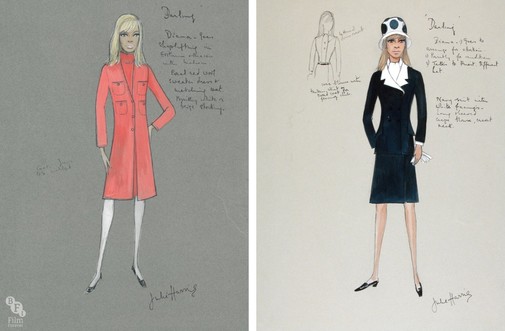 Costume sketches for DARLING (1965)It feels appropriate that Julie Harris' only Oscar comes from such a modern story. When giving interviews later in life, the designer often talked about the underappreciated task of dressing contemporary films. Despite this and modern designs being her strong suit, Harris thought it easier to work on period films, which were her favorites. After all, everyone has an opinion on modern fashions, while, when dealing with historical styles, the costume designer can feel more authority. She got a BAFTA for The Wrong Box's Edwardian ensembles and considered The Slipper and the Rose to be her most beloved feature. A hallucination of frothy Rococo design in candy colors and anachronistic glitz, the film's a musical retelling of the Cinderella story. A longtime fan of musical movies, it's no wonder that Harris had fun with the project.
Costume sketches for DARLING (1965)It feels appropriate that Julie Harris' only Oscar comes from such a modern story. When giving interviews later in life, the designer often talked about the underappreciated task of dressing contemporary films. Despite this and modern designs being her strong suit, Harris thought it easier to work on period films, which were her favorites. After all, everyone has an opinion on modern fashions, while, when dealing with historical styles, the costume designer can feel more authority. She got a BAFTA for The Wrong Box's Edwardian ensembles and considered The Slipper and the Rose to be her most beloved feature. A hallucination of frothy Rococo design in candy colors and anachronistic glitz, the film's a musical retelling of the Cinderella story. A longtime fan of musical movies, it's no wonder that Harris had fun with the project.
Honestly, this master of cinema's career is so vast, one could write an entire book about her life, her work, her many funny stories, contradictions, and complexities. Take Doris Dors' famous fur bikini. Despite having a filmography populated by scantily clad women (including Bond girls) and outrageous lingerie, Harris wasn't always a fan of these risqué outfits. When asked by Dors to conceive a furry bikini (the journalists called it mink, but it was actually rabbit) for a Venice photo op, Harris obliged though she voiced her distaste for the sartorial choice. The costume designer found it tasteless, but that was part of her job, and she was a consummate professional. Maybe Harris' most apparent characteristic was a taste for clean, elegant lines, so it's easy to see why she would dislike Dors' brand of provocation.
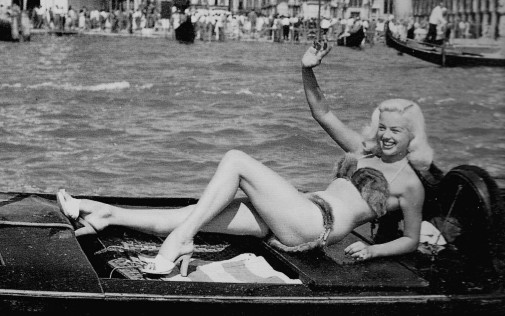 Diana Dors at the Venice Film festival of 1955
Diana Dors at the Venice Film festival of 1955
The 1991's miniseries A Perfect Hero marked the end of Julie Harris' career as a costume designer. After retiring, she returned to her first passion and became a successful oil painter in her twilight years. Still, her celluloid legacy lives on. Here are some highlights from her long career:
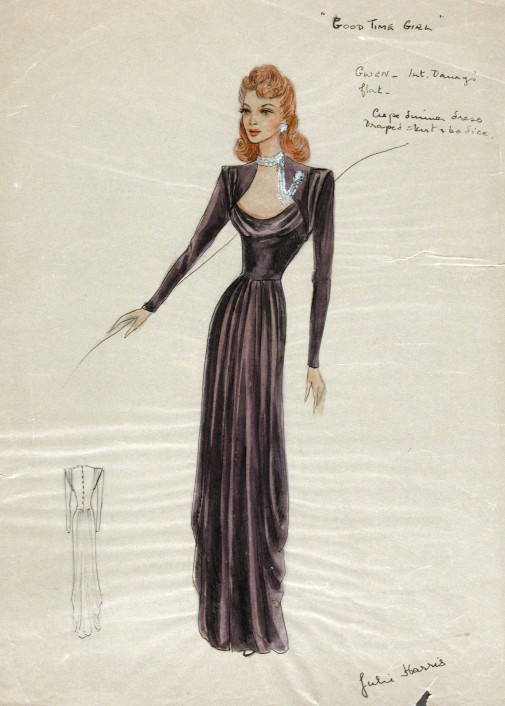
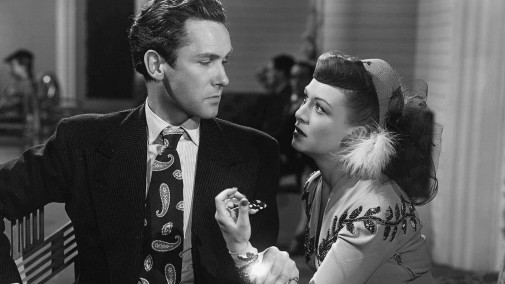
GOOD-TIME GIRL (1948)
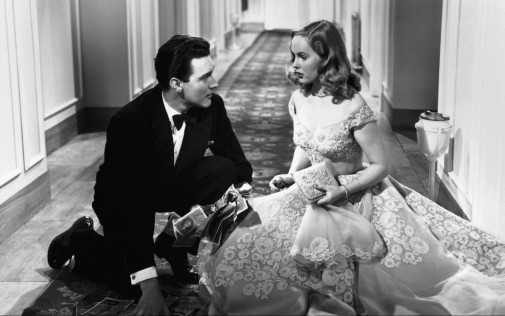
ALWAYS A BRIDE (1953)
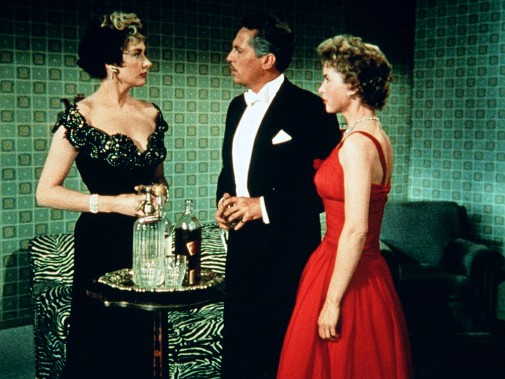
SIMON AND LAURA (1955)
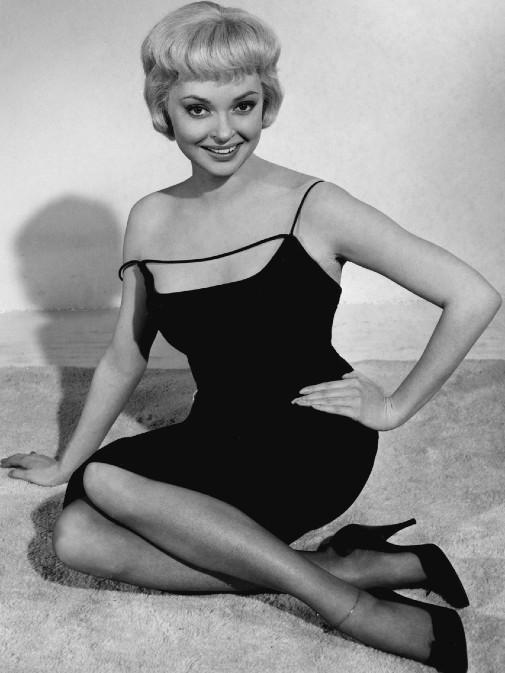
THE ROUGH AND THE SMOOTH (1959)
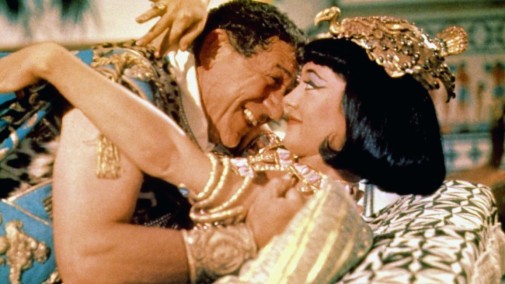
CARRY ON CLEO (1964)
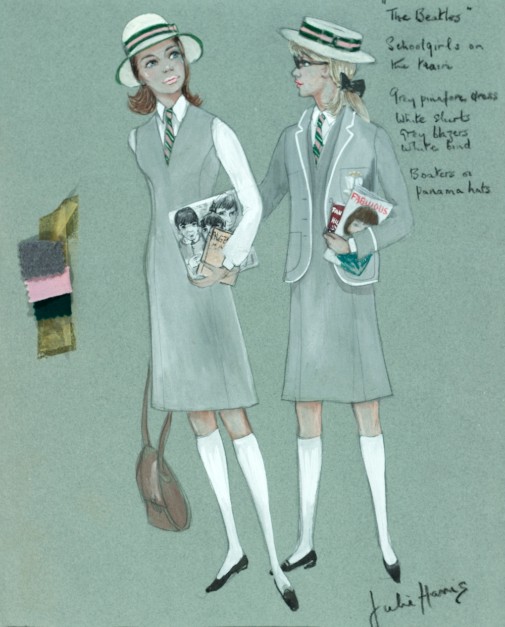
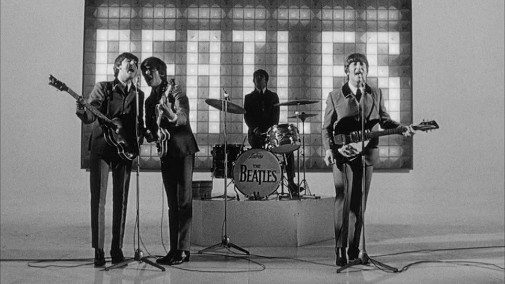
A HARD DAY’S NIGHT (1964)
DARLING (1965)
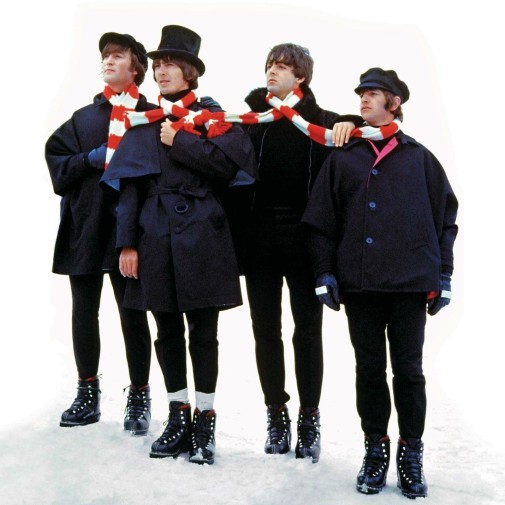
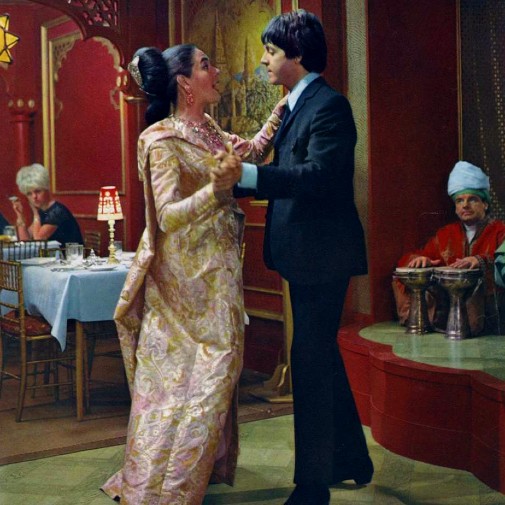
HELP! (1965)
THE WRONG BOX (1966)
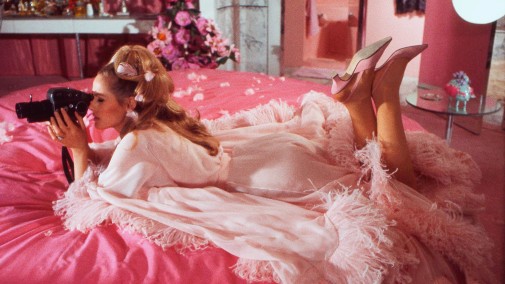
CASINO ROYALE (1967)
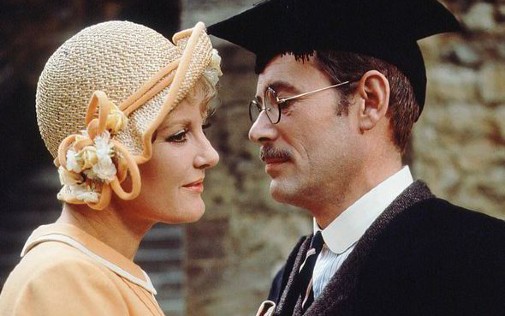
GOODBYE, MR. CHIPS (1969)
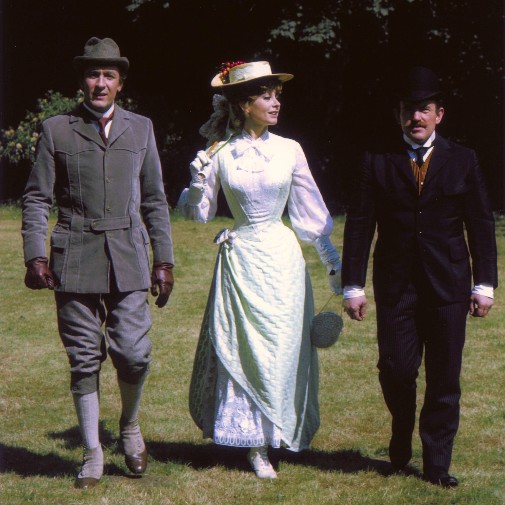
THE PRIVATE LIFE OF SHERLOCK HOLMES (1970)
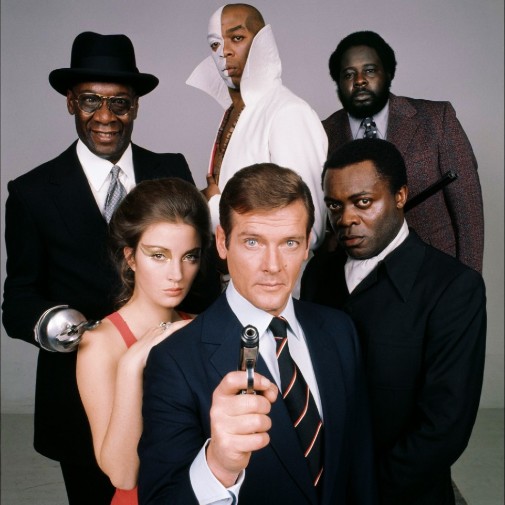
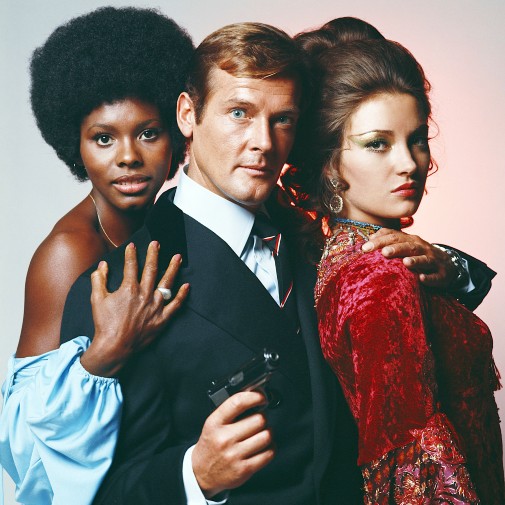
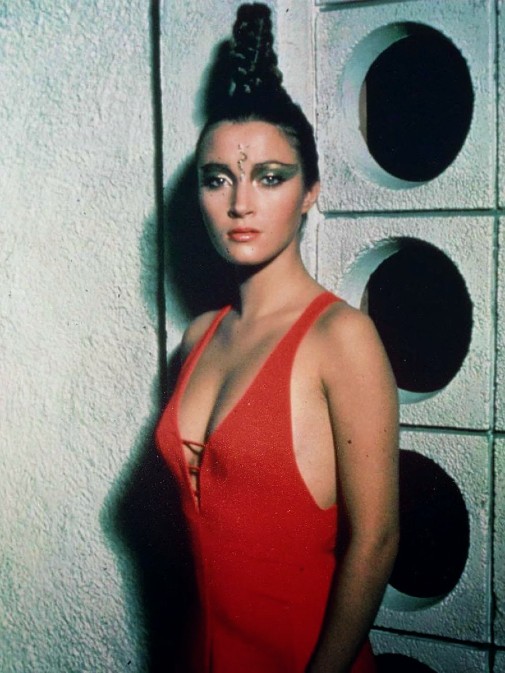
LIVE AND LET DIE (1973)
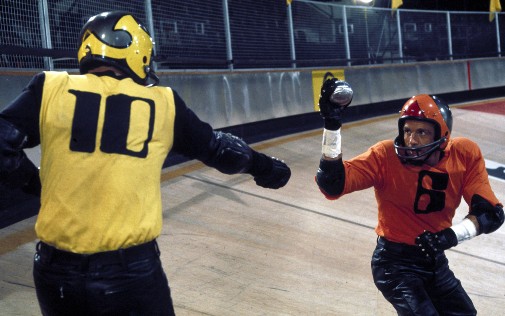
ROLLERBALL (1975)

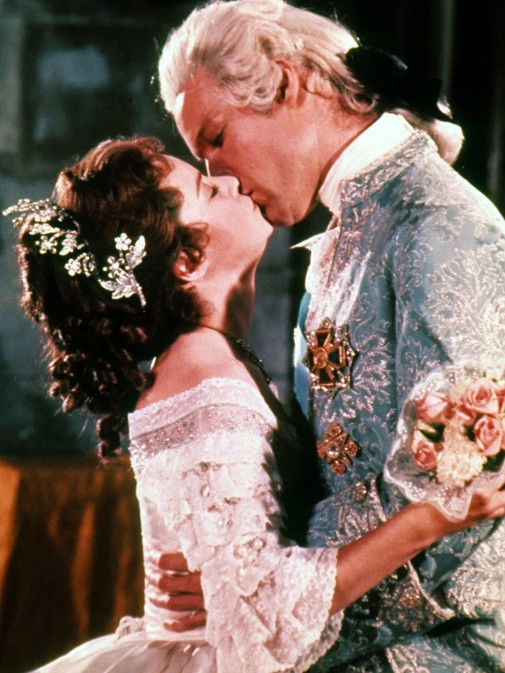
THE SLIPPER AND THE ROSE (1976)
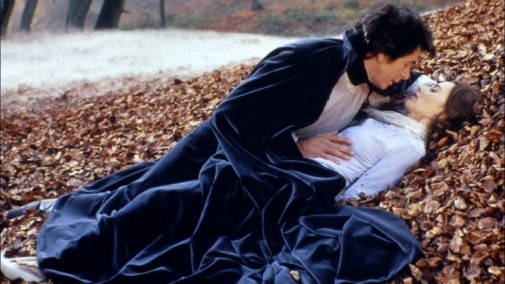
DRACULA (1979)

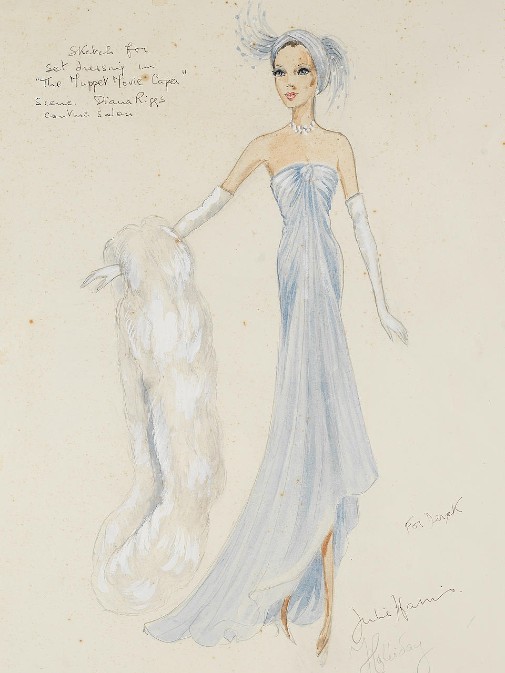
THE GREAT MUPPET CAPER (1981)
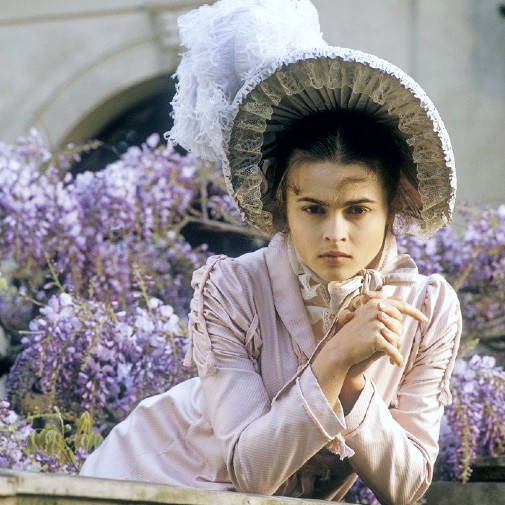
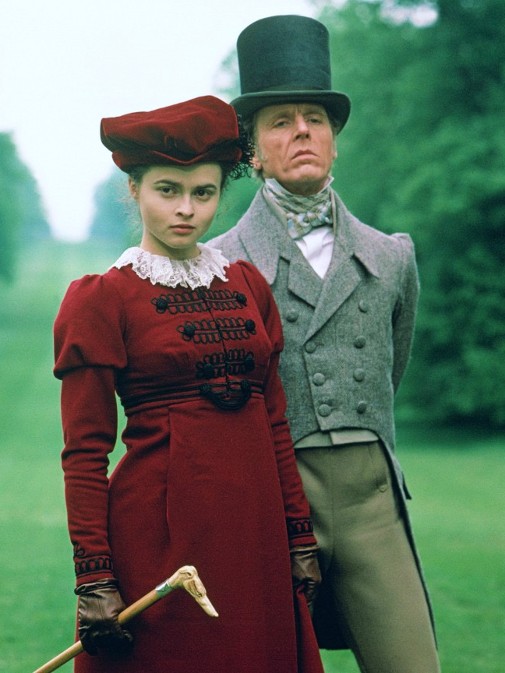
A HAZARD OF HEARTS (1987)
What's your favorite of Julie Harris' many movies and TV projects?



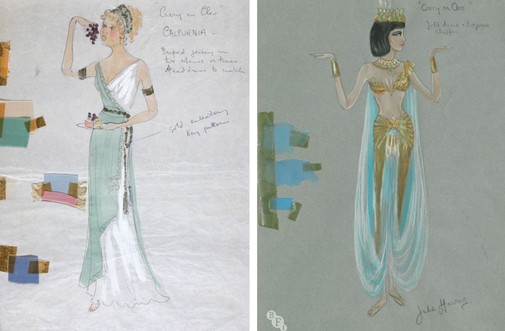
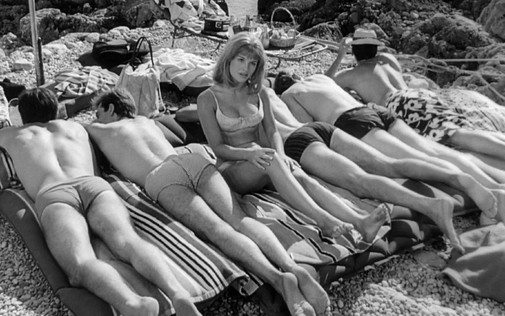
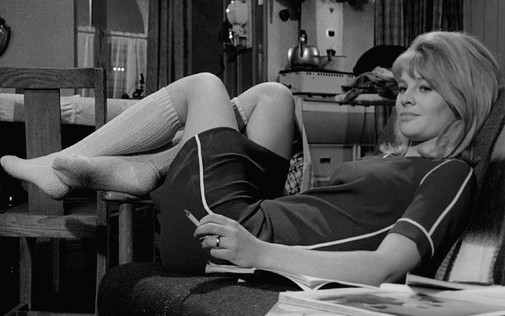
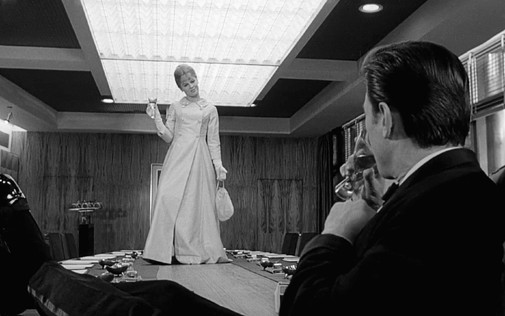
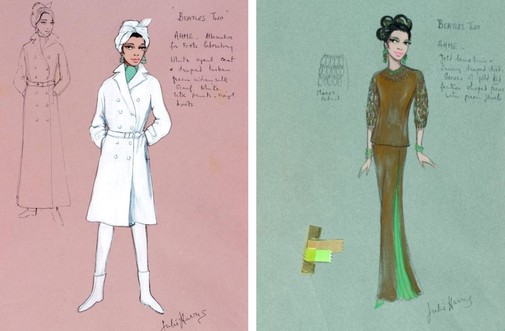
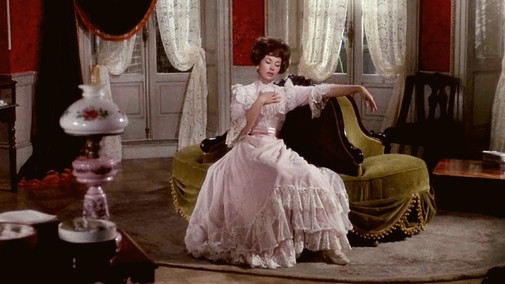
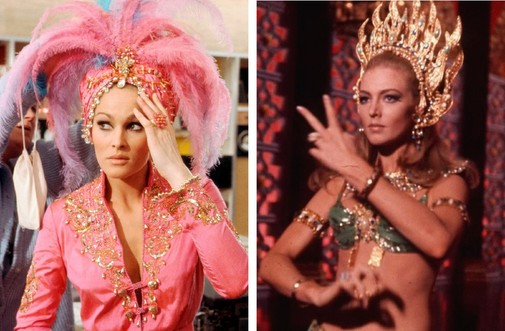

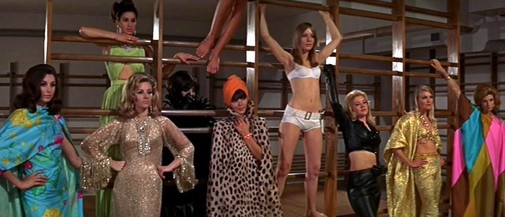
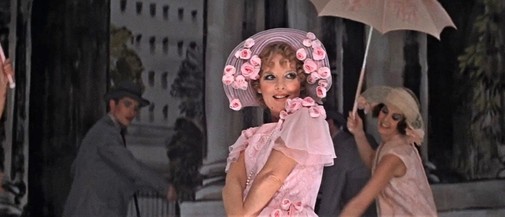
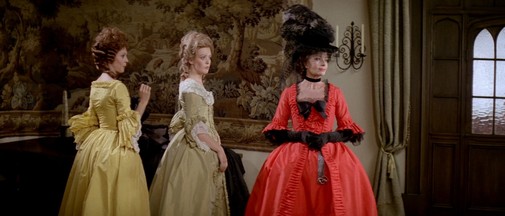
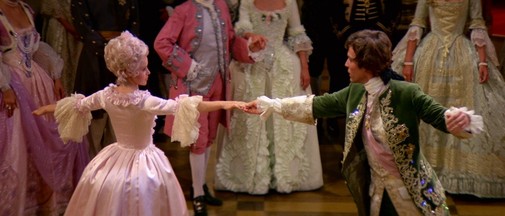

Reader Comments (6)
What a career! And what looks best on Julie Harris herself? A Claudio Alves piece.
Kael, Ebert, Alves.
I don't know if it's her best, but The Great Muppet Caper really does have sensational costumes.
Now that is a costume designer.
She dressed The Beatles in suits!!!
Well this really makes me want to see Help and Casino Royale right away I have never watched them just to pay attention to the costumes.
I'm so glad she got that Oscar for Darling because the costumes, and Julie Christie in them, are just iconic and so forward thinking at the time.
I wonder if the Black & White costume design category functioned as a sort of "contemporary" costume design award as opposed to the color period costumes? I know that black and white was usually reserved for "issue" or serious movies. I'm sure that On The Waterfront, for example, could have been shot in color and the budget allowed it, but they filmed it in black and white because of the seriousness of the subject matter. That thinking didn't really change until the mid to late 60s.
quick, somebody cast lesley manville as julie designing for the muppets